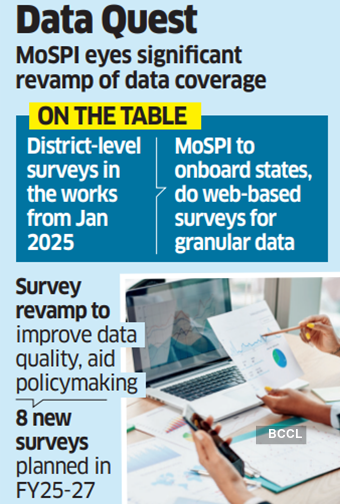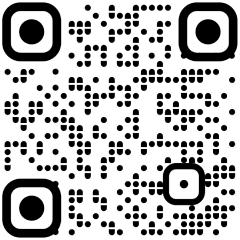[ad_1]
It may soon be possible to ascertain the employment and inflation levels or size of the economy or factory output of any district in the country. India is working on mapping economic activity in districts through various statistical surveys planned next year onwards, as it eyes a significant expansion of official statistics coverage. The microdata is expected to improve policymaking.
The Ministry of Statistics and Programme Implementation (MoSPI) plans to come up with district-level estimates by onboarding states and also using technologies such as web-based surveys to compile ground-up data. “We will have more estimates at the district level. By January next year, every survey should throw up national, state and district level estimates,” a senior government official told ET. Currently, state-level data such as GSDP (gross state domestic product) are available but granular information at the district level is sparse. Some states have initiated efforts in this direction but there is an absence of comprehensive data sources at the district level.
As per the official cited, such minute data will need a change in the sample size and sampling methodology and the ministry has sought a technical view on the issue.
As part of the planned official data overhaul, the ministry also aims to complete the base revision exercise for national accounts by early 2026.
Next Base Year
Estimates for the new base are likely to be released in February 2026. The base year for most macroeconomic data currently is FY12 and MoSPI is likely to pitch FY23 or FY24 as the next base year to the Advisory Committee on National Accounts Statistics, which is overseeing the revision of the base year for national accounts.
“The base revision will improve the computation of gross domestic product by including the new and latest data sources from surveys and administrative data,” the official said, adding that goods and services tax (GST) is a new data source that could be used to estimate GDP. Moreover, to enhance the quality of data, the method of deflation will be improved. The ministry intends to do away with the single deflation method which it says is a less sound method of arriving at real estimates. A deflator is used to remove the impact of inflation from national account estimates.
Updated Surveys
Besides increasing the frequency of the periodic labour force survey (PLFS) to monthly for urban areas and quarterly for rural areas from January 2026, the Household Consumption Expenditure Survey has been simplified to reduce respondent burden and fatigue. These are currently conducted quarterly and annually, respectively.

This will entail three separate questionnaires for food items, consumables & service items, and durables, along with three separate monthly visits for these three questionnaires to reduce the burden on respondents.
“We are also looking at the length of the questionnaires so that they are not onerous,” the official said.
In FY25 and FY26, a Domestic Tourism Expenditure Survey, a National Household Travel Survey, a full-fledged survey on health, a survey on education indicators, and a forward-looking survey on private sector capex are being planned. FY27 will see a Survey on the Living Conditions of Tribes in India, and an All India Debt and Investment Survey and Situation Assessment Survey to gauge the overall health of the economy.
[ad_2]
Source link



